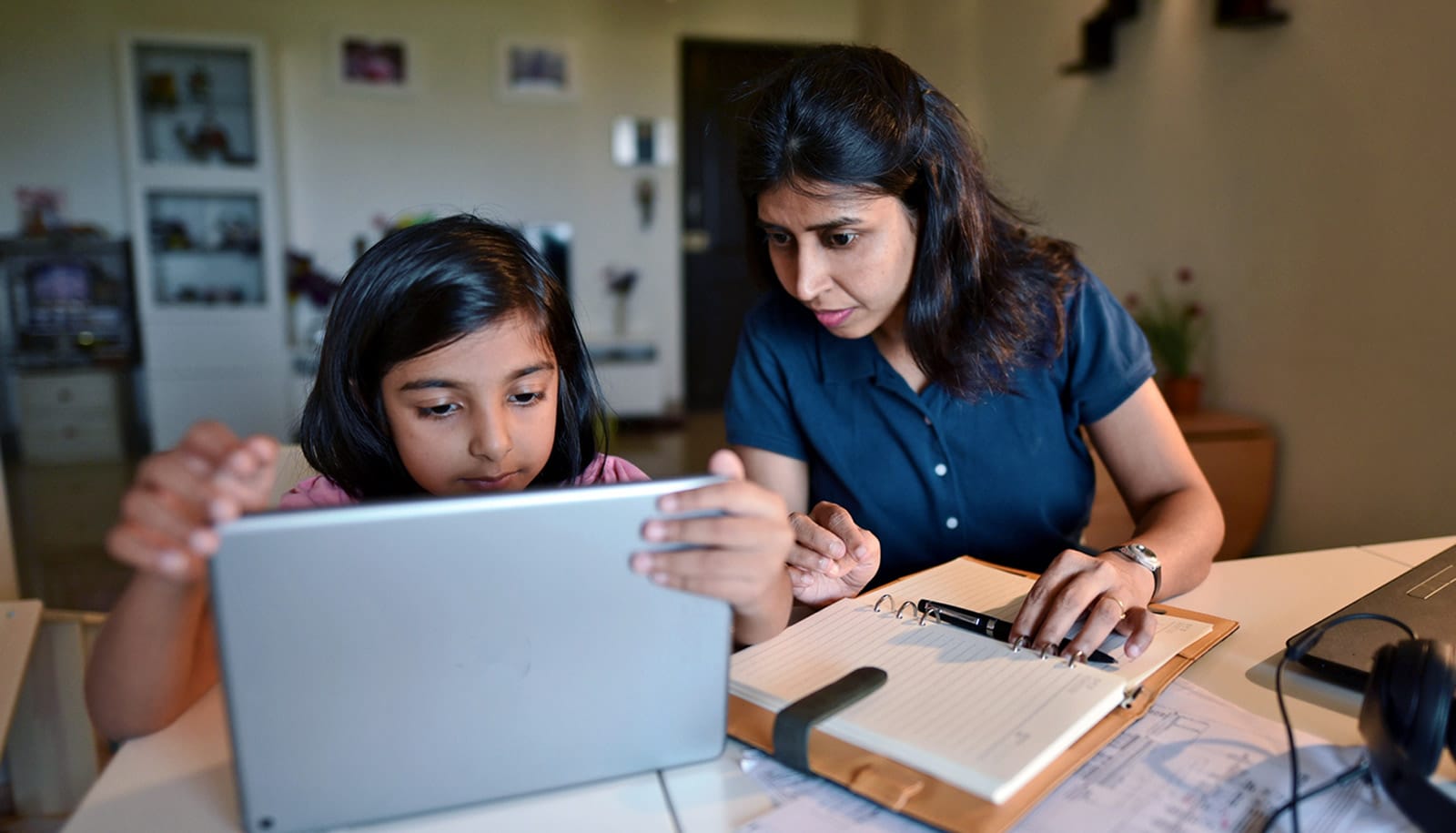A dramatic shift toward remote work during the COVID-19 pandemic caused telecommuting parents in the United States to spend significantly more time “parenting” their children in the first year of the pandemic than they did before, according to a new study.
In the study in the Journal of Marriage and Family, the researchers found that parents working remotely, particularly mothers, significantly increased the amount of time they spent on supervisory parenting—or “watching” their children as they did other activities, such as their job-related duties, not focused on childcare.
Mothers, both those working remotely and on-site, also altered their schedules more often during the pandemic to extend the paid workday.
However, the findings show no overall increase in the amount of time working parents spent on primary childcare duties—feeding, bathing, and other basic care—during the pandemic, regardless of whether they commuted to their jobs or worked remotely.
“The lack of increase in time devoted to basic childcare activities is much less surprising given the spike in telecommuting parents working while in their children’s presence or supervising them,” says coauthor Emma Zang, an assistant professor of sociology, biostatistics, and global affairs at Yale University.
“Our study demonstrates that parenting during the pandemic’s first year, particularly for moms working from home, often required multi-tasking and adjusting work schedules. This suggests that while remote work provides parents greater flexibility, there are potential negative effects on work quality and stress that are disproportionately faced by mothers.”
The study is the first to utilize time-diary data in the United States—records of individuals’ daily activity—to examine the association between parents’ work arrangements during the pandemic and how they use their time. Specifically, Zang and her coauthors—Thomas Lyttelton of Copenhagen Business School and Kelly Musick of Cornell University—analyzed nationally representative data from the 2017–2020 American Time Use Survey to estimate changes in paid work, childcare, and housework among parents working remotely and on site from before the pandemic and after its onset.
Time parents spent with their children present, but not directly supervising them, increased by more than an hour per day among telecommuting mothers and fathers during the pandemic, and supervisory parenting increased over the same period by 4.5 hours among mothers and 2.5 among fathers, on average, over the same period. (A 104% increase over pre-pandemic levels for moms, and an 87% increase for dads.) The much steeper increase in the amount of time spent by mothers on supervisory duties suggests they have disproportionate responsibility for childcare relative to fathers, the researchers say.
The study also revealed that most of the time telecommuting parents spent in their children’s presence or supervising them on workdays during the pandemic in 2020 occurred while they were simultaneously engaged in job-related activities. Moms and dads spent just under an additional hour of work time with children present; mothers spent four additional hours of work time supervising children, compared to two more among fathers.
Parents who commuted to work did not see a statistically significant increase in these areas, suggesting that they were constrained in how they could respond to rising childcare demands during the pandemic, the researchers note.
“Remote work allowed parents to triage during the disruptions of daycare closures and online schooling, even if the burden fell disproportionately on mothers,” says Lyttelton. “Commuting parents had even less leeway in their schedules.”
There is evidence of a reduction in the gender gap concerning household labor between telecommuting mothers and fathers during the pandemic. The study found that parents, particularly fathers, working from home increased the amount of time they spent on household chores, such as laundry and cleaning, during the pandemic. Fathers spent an additional 30 minutes per day on housework—up from 44 minutes per day pre-pandemic—while mothers logged an extra 16 minutes of chores.
The researchers also found a disparity between telecommuting mothers and fathers in the amount of time they spent playing with their children, as opposed to time spent with children that didn’t involve play. Moms working from home spent an additional 16 minutes per day playing with their kids while dads across both work arrangements played with their children an extra six minutes per day. Mothers working on-site saw no increase during the pandemic, according to the study.
The findings on housework and time spent playing with children differ from evidence collected prior to the pandemic, which had showed that remote work is associated with large gender disparities in housework and smaller disparities in childcare, the researchers note.
Mothers working remotely and on-site both reported altering their schedules during the pandemic, working during non-standard hours presumably to meet the increased demands of parenting, the researchers say.
“Our work provides insights into important dimensions of inequality during the pandemic between mothers and fathers and parents who work from home and on-site workers,” Zang says. “The pandemic underscored that our work culture is unaccommodating toward the demands parents face and a policy infrastructure ill-suited to support working parents.
“We need change at the public and private levels to better serve the wellbeing of working families.”
Source: Yale University



